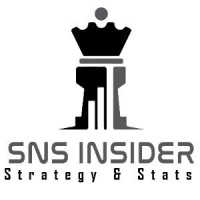Increasing demand for low-power, wide-area IoT connectivity drives growth in the LTE IoT Market, offering efficient wireless solutions.
LTE IoT Market Scope and Overview
The LTE IoT Market, as highlighted by the latest SNS Insider report, witnessed a valuation of USD 2.97 billion in 2022, and projections indicate a meteoric rise, reaching USD 23.23 billion by 2030. The robust Compound Annual Growth Rate (CAGR) of 29.3% expected from 2023 to 2030 underscores the substantial opportunities and advancements driving the market’s exponential growth.
LTE IoT technology is poised for significant growth, fueled by the escalating demand for data storage and transfer applications within the burgeoning Internet of Things (IoT) landscape. Industries such as IoT-enabled manufacturing, telematics, professional services, navigation, and infotainment in transport are propelling the global LTE IoT market forward.
The increasing demand for connected devices further amplifies market expansion, emphasizing the need for distinct network qualities.
The prime catalyst for LTE IoT market growth lies in the demand for defined and unique network characteristics and the proliferation of connected devices worldwide. While network infrastructure deployment’s operational downtime poses a challenge, the surge in industrial IoT applications across diverse sectors is attracting new players, expanding their market presence in emerging economies.
Get a Report Sample of LTE IoT Market @ www.snsinsider.com/sample-request/1790
Some of the Major Key Players Studied in this Report are:
- Ericsson
- NetNumber
- Vodafone
- Athonet
- Link Labs
- Telstra
- Sequans Communications
- Sierra Wireless
- MediaTek
- PureSoftware
- Others
LTE IoT Market Analysis
Advancements in LTE-M and NB-IoT technologies, coupled with ecosystem support and interoperability standards, are fostering LTE IoT adoption. The healthcare sector leverages LTE IoT for remote patient monitoring, asset tracking, and logistics, while smart agriculture benefits from precision farming and livestock management.
Integrating LTE IoT devices with edge computing and AI enhances real-time data processing and analysis, reinforcing the security and privacy of sensitive information in an increasingly connected IoT landscape.
The global rollout of smart city initiatives presents a significant opportunity for LTE IoT deployment, with vertical-specific solutions tailored to healthcare, agriculture, transportation, and manufacturing industries. Telecom operators’ investments in enhancing LTE IoT connectivity services, strategic collaborations, product launches, and research and development further contribute to market development.
Key Drivers of the LTE IoT Market
The LTE IoT Market is experiencing robust growth, driven by several key drivers that are shaping the future of connected devices and smart technologies.
- Increased Demand for Low-Power, Wide-Area Connectivity: As the Internet of Things (IoT) ecosystem continues to expand, there is a growing need for wireless connectivity solutions that can support a wide range of devices and applications while minimizing power consumption. LTE IoT technologies, such as LTE-M (LTE for Machines) and NB-IoT (Narrowband IoT), offer low-power, wide-area connectivity, making them ideal for battery-powered IoT devices deployed in remote or hard-to-reach locations.
- Enhanced Coverage and Reliability: LTE IoT networks leverage existing cellular infrastructure, providing extensive coverage and reliable connectivity in both urban and rural areas. This widespread coverage enables seamless communication between IoT devices and network servers, even in challenging environments with limited connectivity or signal strength. The reliability of LTE IoT networks ensures consistent data transmission and enables mission-critical IoT applications, such as smart utilities, asset tracking, and industrial automation.
- Support for Massive IoT Deployments: LTE IoT technologies are designed to support massive deployments of IoT devices, enabling millions of devices to connect to a single network infrastructure. This scalability is essential for IoT applications that require large-scale deployments, such as smart cities, agricultural monitoring, and environmental sensing. LTE-M and NB-IoT offer efficient use of spectrum resources, allowing operators to accommodate a high density of IoT devices while maintaining network performance and reliability.
- Security and Data Privacy: Security is a top priority in the IoT ecosystem, particularly as connected devices collect and transmit sensitive data across networks. LTE IoT technologies incorporate robust security features, such as encryption, authentication, and secure device management protocols, to protect data integrity and confidentiality. These built-in security mechanisms mitigate the risk of cyber threats, unauthorized access, and data breaches, instilling confidence in IoT deployments across various industries, including healthcare, finance, and smart infrastructure.
- Ecosystem Collaboration and Standardization: The LTE IoT market benefits from collaboration among industry stakeholders, including mobile operators, chipset manufacturers, device vendors, and standards bodies. Industry initiatives and partnerships drive innovation, interoperability, and standardization of LTE IoT technologies, ensuring compatibility and seamless integration across diverse IoT ecosystems. Standardized specifications and protocols enable ecosystem players to develop and deploy LTE IoT solutions efficiently, accelerating time-to-market and driving widespread adoption of connected devices and services.
In summary, the LTE IoT market is propelled by the demand for low-power, wide-area connectivity; enhanced coverage and reliability; support for massive IoT deployments; security and data privacy; and ecosystem collaboration and standardization. These key drivers are shaping the future of IoT connectivity, enabling innovative applications and services that leverage the power of LTE networks to create smarter, more connected environments.
Market Segmentation and Sub-Segmentation Included Are:
- On The Basis of Technology: The LTE IoT market divides into NB-IoT and LTE-M. LTE-M, emphasizing high throughput with low latency, minimizes costs, reduces complexity, and expands coverage. The anticipated surge in demand for NB-IoT, driven by improved coverage, network stability, security, rapid rollout, and cost efficiency, is set to propel the global LTE IoT industry.
- On The Basis of Services: Professional services are expected to dominate the market, offering planning, design, implementation, consulting, support, maintenance, and upgrade services. Their crucial role both before and after LTE IoT technology implementation contributes to their larger market size compared to managed services.
- On The Basis of End-User Industry: The manufacturing industry is poised to be the major contributor to LTE IoT market growth. Advancements in robotics, automated production lines, and the adoption of IoT solutions and wireless connectivity platforms enhance productivity and transform manufacturing operations into smart, flexible, and interoperable processes.
Key Regional Development
Europe leads the LTE IoT market, propelled by widespread LTE technology adoption, expansive coverage, and government initiatives. The presence of major telecom companies like Orange, Vodafone, and Deutsche Telekom facilitates the integration of new technologies such as LTE-M and NB-IoT.
Germany, the UK, and France spearhead LTE IoT market growth, driven by telco cloud adoption, increased data consumption, and the evolving wireless technology landscape.
Key Takeaways
The LTE IoT market is poised to exceed USD 23.23 billion by 2030, driven by the surge in IoT applications and the need for unique network qualities.
Europe stands at the forefront of LTE IoT market expansion, leveraging widespread LTE technology adoption and strategic initiatives by key telecom players.
Latest Version of this Report @ www.snsinsider.com/checkout/1790
Recent Developments
In June 2022, System Loco selected the Aeris Intelligent IoT network for dynamic and flexible connectivity, ensuring worldwide track and trace of smart pallets.
In April 2022, UScellular collaborated with Qualcomm and Inseego to launch 5G mmWave High-Speed Internet Service, providing wireless high-speed internet access to homes and businesses.
Table of Contents- Major Key Points
- Introduction
- Research Methodology
- Market Dynamics
- Drivers
- Restraints
- Opportunities
- Challenges
- Impact Analysis
- COVID-19 Impact Analysis
- Impact of Ukraine- Russia war
- Impact of Ongoing Recession on Major Economies
- Value Chain Analysis
- Porter’s 5 Forces Model
- PEST Analysis
- LTE IoT Market Segmentation, by Technology
- NB-IoT
- LTE-M
- LTE IoT Market Segmentation, by Services
- Professional Services
- Managed Services
- LTE IoT Market Segmentation, by End-User Industry
- Manufacturing
- Energy and Utilities
- Transportation and Logistics
- Healthcare
- Agriculture
- Regional Analysis
- Introduction
- North America
- Europe
- Asia-Pacific
- The Middle East & Africa
- Latin America
- Company Profile
- Competitive Landscape
- Competitive Benchmarking
- Market Share Analysis
- Recent Developments
- USE Cases and Best Practices
- Conclusion
News From
Category: Market Research Publishers and Retailers Profile: In the fast-paced business biospheres, businesses need to constantly evolve to grow and stay relevant. At SNS Insider, we believe in adopting a data-oriented approach to aid organizations be familiar with the nerve of the industry.
For more information:
This post was originally published on the 3rd party mentioned in the title ofthis site





